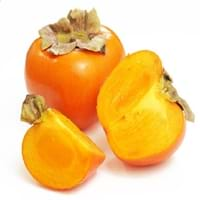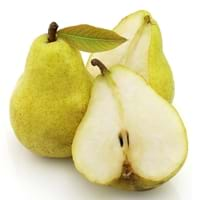Health Benefits
Anti-oxidant properties, Beneficial in curing fever, Cancer prevention, Heart care, Reduces nervous tension
Arthritis prevention, Cancer prevention, Gout treatment, Heart care
General Benefits
Anti-inflammatory properties, Boosts immune system, Controls blood pressure, Digestive aid, Eye care, Fights against infections, Helps in weight loss, Improves blood circulation
Anti-inflammatory properties, Boosts immune system, Controls blood pressure, Controls blood sugar levels, Cures fever, Digestive aid, Sore throat treatment
Skin Benefits
Anti-aging benefits, Brightens and lightens complexion, Reduces wrinkles
Reduces wrinkles, Treatment of acne
Hair Benefits
Good conditioner, Promotes longer and healthier hair, Treatment of dandruff
Promotes longer and healthier hair, Shiny hair
Allergy Symptoms
Abdominal pains, Anaphylaxis, Inflammation
Anaphylaxis, Digestive Problems, Itching, Skin Rashes, Swelling
Side Effects
Affects blood glucose levels, Decrease in blood sugar levels, Coagulation
Allergic reaction
Best Time to Eat
Along with meal, As a snack in the late afternoon, Don't consume at night and before bed, Eat the fresh ones, avoid mixing with any other foods, don't eat after meal.
As a snack in the late afternoon, Don't consume at night and before bed, Eat the fresh ones, avoid mixing with any other foods, don't eat after meal., Morning time (before lunch)
Vitamin A (Retinol)
Not Available
Vitamin B1 (Thiamin)
Not Available
Vitamin B2 (Riboflavin)
Not Available
Vitamin B3 (Niacin)
Not Available
Vitamin B5 (Pantothenic Acid)
Not Available
Vitamin B6 (Pyridoxin)
Not Available
Vitamin B9 (Folic acid)
Not Available
Vitamin C (Ascorbic Acid)
Vitamin E (Tocopherole)
Not Available
Vitamin K (Phyllochinone)
Not Available
Lutein+Zeaxanthin
Not Available
Phytosterol
Not Available
Calories in Fresh Fruit with Peel
Calories in Fresh Fruit without Peel
Not Available
Not Available
Calories in Frozen Form
Not Available
Not Available
Calories in Dried Form
Not Available
Calories in Canned Form
Not Available
Not Available
Type
Berry, Tree fruit
Tree fruit
Season
Autumn, Winter
Autumn, Summer, Winter
Varieties
Early Golden, John Rick, Miller, Woolbright and Ennis
Green Anjou, Red Anjou, Bartlett, Red Bartlett, Bosc, Comice, Concorde, Forelle, Seckel and Starkrimson
Color
Orange, Red, Yellow
Yellow
Inside Color
Yellow
White
Taste
Sweet
Crunchy, Sweet
Origin
Eastern United States
China, Japan
Soil Type
Sandy loam, Well-drained
Clayey, Loamy, Sandy
Climatic Conditions
Can tolerate wide range of climates, Sunny
Cold, Hot, Without frosts
Facts about
- It is said that formation of seeds inside the persimmon fruit shows what type of winter is coming(type of snow).
- There are about 2000 varieties of this fruit.
- The American persimmon has another name 'Possumwood'.
- The first pear tree was planted in North America in 1620.
- The Chinese considered the pear fruit to be a symbol of immortality.
- This fruit was used as a natural remedy against nausea in ancient Greece.
Other Countries
Azerbaijan, Brazil, Costa Rica, Japan, Korea, Pakistan
Argentina, Belgium, India, Italy, Japan, South Africa, Spain, Turkey, United States of America
Top Importer
United States of America
Europe
Top Exporter
United States of America
China
Botanical Name
Diospyros virginiana
Pyrus communis
Synonym
Not Available
Not Available
Subkingdom
Tracheobionta
Tracheobionta
Division
Magnoliophyta
Magnoliophyta
Class
Magnoliopsida
Magnoliopsida
Subclass
Dillenhidae
Rosidae
Family
Ebenaceae
Rosaceae
Species
D. virginiana
P. communis
Generic Group
Not Available
Rose
Difference Between American Persimmon and Pear
We might think that American Persimmon and Pear are similar with respect to nutritional value and health benefits. But the nutrient content of both fruits is different. American Persimmon and Pear Facts such as their taste, shape, color, and size are also distinct. The difference between American Persimmon and Pear is explained here.
The amount of calories in 100 gm of fresh American Persimmon and Pear with peel is 127.00 kcal and 57.00 kcal and the amount of calories without peel is Not Available and Not Available respectively. Thus, American Persimmon and Pear belong to High Calorie Fruits and Low Calorie Fruits category.These fruits might or might not differ with respect to their scientific classification. The order of American Persimmon and Pear is Ericales and Rosales respectively. American Persimmon belongs to Ebenaceae family and Pear belongs to Rosaceae family. American Persimmon belongs to Diospyros genus of D. virginiana species and Pear belongs to Pyrus genus of P. communis species. Beings plants, both fruits belong to Plantae Kingdom.









